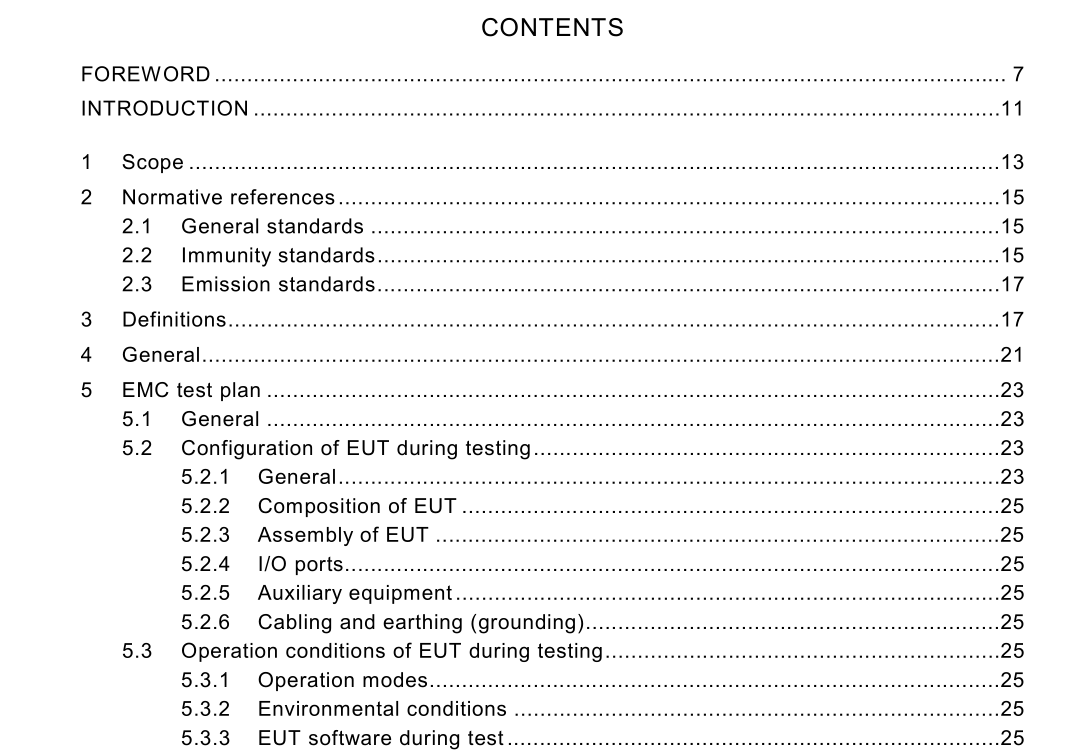IEC 61326 pdf download

IEC 61326 pdf download.Electrical equipment for measurement, control and laboratory use – EMC requirements
1 Scope
This International Standard specifies minimum requirements for immunity and emissions regarding electromagnetic compatibility (EMC) for electrical equipment, operating from a supply of less than 1 000 V a.c. or 1 500 V d.c. or from the circuit being measured, intended for professional, industrial-process and educational use, including equipment and computing devices for – measurement and test; – control; – laboratory use; – accessories intended for use with the above (such as sample handling equipment), intended to be used in industrial and non-industrial locations. Computing devices and assemblies and similar equipment within the scope of information technology equipment (ITE) and complying with applicable ITE EMC standards can be used without additional testing. Where a relevant dedicated EMC standard exists, it shall take precedence over all aspects of this product-family standard. The following equipment is covered in this standard. a) Electrical measurement and test equipment This is equipment which by electrical means measures, indicates or records one or more electrical or non-electrical quantities, also non-measuring equipment such as signal generators, measurement standards, power supplies and transducers. b) Electrical control equipment This is equipment which controls one or more output quantities to specific values, with each value determined by manual settings, by local or remote programming, or by one or more input variables. This includes industrial process measurement and control (IPMC) equipment, which consists of devices such as:– process controllers and regulators; – programmable controllers (PC); – power supply units of equipment and systems (centralized or dedicated); – analogue/digital indicators and recorders; – process instrumentation; – transducers, positioners, intelligent actuators, etc. c) Electrical laboratory equipment This is equipment which measures, indicates, monitors or analyses substances, or is used to prepare materials.
3 Definitions
For the purposes of this International Standard the definitions in IEC 60050(161) apply, together with the following. Other definitions, not included in IEC 60050(161) and this standard, but nevertheless necessary for the application of the different tests, are given in the EMC basic publications. 3.1 type test test of one or more samples of equipment (or parts of equipment) made to a particular design, to show that the design and construction meet one or more requirements of this standard. Statistical sampling is not required for measurement, control, and laboratory equipment NOTE This definition is an amplification of IEV 151-04-15 to cover both design and construction requirements.3.3 enclosure port physical boundary of equipment through which electromagnetic fields may radiate or impinge 3.4 class A equipment equipment suitable for use in establishments other than domestic, and those directly connected to a low-voltage power supply network which supplies buildings used for domestic purposes [CISPR 11, 4.2] 3.5 class B equipment equipment suitable for use in domestic establishments, and in establishments directly connected to a low-voltage power supply network which supplies buildings used for domestic purposes [CISPR 11, 4.2] 3.6 long-distance lines lines within a building which are longer than 30 m, or which leave the building (including lines of outdoor installations) 3.7 industrial locations locations characterized by a separate power network, in most cases supplied from a high- or medium-voltage transformer, dedicated for the supply of installations feeding manufacturing or similar plants with one or more of the following conditions: – frequent switching of heavy inductive or capacitive loads; – high currents and associated magnetic fields; – presence of industrial, scientific and medical (ISM) apparatus (for example, welding machines) 3.8 laboratory or test and measurement area area that is specifically used for analysis, testing and servicing. Equipment within the scope has to be operated by trained personnel









